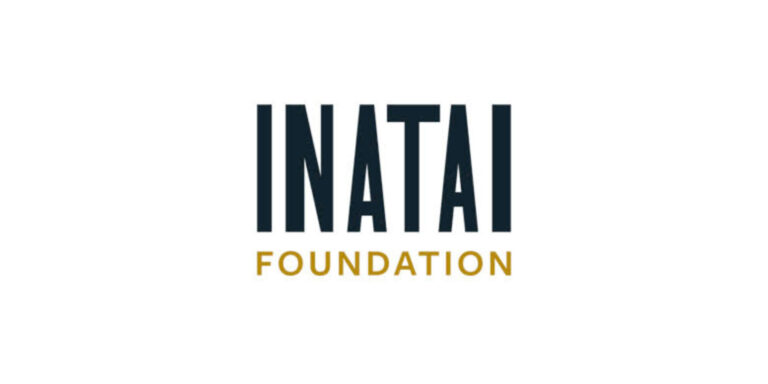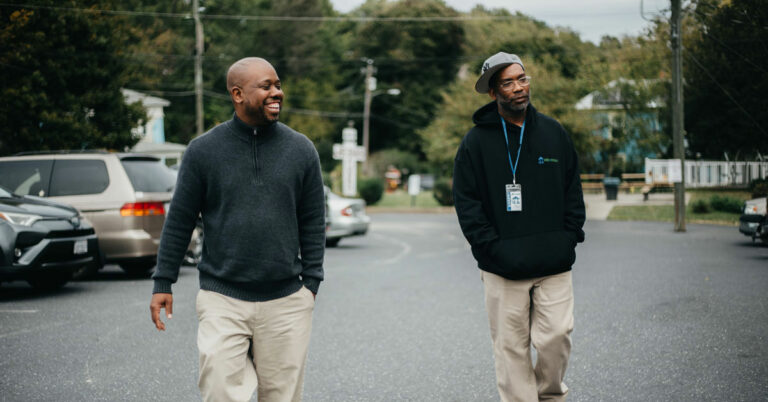Tools & Resources to Shift Power to Communities
Browse Menu
Looking at your role/function within your foundation.
What are listening practices that can shift power?
Assess how you are listening through a set of reflection questions.
Change the composition and roles of your staff and board
One way to improve community-centered listening is to change who does the listening — that is, how your foundation is governed and staffed. For example, you might hire staff or recruit board members who have lived expertise in the issue areas you are addressing.
Remember that when working with community members in these new ways, it’s critical to build a culture that makes everyone feel welcome, supported, and able to contribute.
Get inspired by what other funders are doing

Inatai Foundation hires employees who, explains president & CEO Nichole June Maher, “reflect the people we are accountable to and have expertise in delivering change with communities.” Inatai does not require prospective staff to have philanthropy experience, and they prioritize candidates who are connected to and live in certain counties in Washington that may be underrepresented on their team. They rarely recruit out of state.
After learning from community leaders how much they valued local connections, Inatai, based in Seattle, opened a second office in another part of the state, and has team members working remotely in more than a third of the state’s counties. Says Maher: “This approach extends to how we recruit board members, where we host meetings and convenings, where and with whom we spend our dollars, and of course, where we make grants.”


The Community Foundation of the Central Blue Ridge (CFCBR) and Missouri Foundation for Health (MFH) each employ full-time community liaisons. Unlike program officers who deal with grants and grantees, these staff members have a mission to hear directly from and build relationships with the people their foundations seek to serve, reporting back in both formal and informal ways to inform and shape decision making at the organization.
The CFCBR’s director of community engagement, who has lunch every week at a local homeless shelter, says his strategy is to make himself a “part of the fabric of the community.” At MFH, the director of community relationships says for herself and the other field-based staff, the “whole job is just talking and listening to everyone” they can.


As part of a 2022 strategic plan that included a commitment to sharing power with grantees and the community, Silicon Valley Social Venture Fund (SV2) appointed three nonprofit leaders to its governing board that had always been comprised only of donors who fund the organization. SV2 is also including for the first time community leaders on the panels making the grants recommendations that go to the board for final determination. And a committee with an equal number of fully voting members representing donors, staff, and the community will have the authority to shape and approve of final plans on the focus of a new initiative that will represent SV2’s largest-ever funding commitment.

The Samuel S. Fels Fund committed to recruiting board members more representative of its Philadelphia community, evolving its board over a three-year period to be 75 percent BIPOC, with more than a third of members born outside the United States. Fels also adopted a set of values that include: Trust that those most directly harmed by injustice are in the best position to know what is needed to address harms and to build well-being.

As part of an emergent approach that includes leaning into values around supporting individuals and community empowerment, in 2021, the Elmina B. Sewall Foundation held its first open call for board members. Six new people joined the board in this bid to attract more diversity and broader community representation.

- Pro Tip
You don’t have to wait for openings on your staff or board. Hosting interns and fellows can cultivate a pipeline that builds mutual relationships and delivers reciprocal value.

The Conrad N. Hilton Foundation has piloted an internship program for young people who have experience in the foster care system, and it is developing a fellowship program to provide leadership and professional development opportunities for people with lived expertise in other issues areas where the foundation works.
Explore this menu to spark the changes you want to see.
Mix and match to find the examples, resources, and reflections best suited to help you and your organization shift power to the people and communities at the heart of your work.
How to use the menu
Funders are moving toward listening and participatory practices at different rates and from different starting points and perspectives. We also know that shifting power is not easy work and requires a strong internal commitment and continuous learning. It’s best to be clear on your organization’s motivations, capabilities, and goals. As you engage with this menu, consider your funding practices, operations, policies, and values — and then identify where change will best serve your foundation and the people and communities you seek to serve.
We recommend examining the menu’s resources and examples with a willingness to turn kernels of ideas into something right for you. No matter where you start or the path you travel through this menu, we suggest spending time on the reflection questions, perhaps engaging colleagues to help you and your organization better understand and prepare for what it means to listen to shift power.
Our Participatory Philanthropy Toolkit, included as a resource in the menu, has a Funder Readiness Assessment that can be adapted to different listening practices and help prepare you to make changes in your priorities and practices.
How we choose the items
We offer a range of examples and resources because there are no one-size-fits-all solutions; and we share them in a menu format so you can choose what’s interesting or relevant to you and your foundation. We don’t rank the practices or the organizations employing them or intend to signal that any featured funder has met its listening goals across the board. Each example represents only a moment in time — a practice one of your peers told us (or an intermediary) about, and that we hope might inspire you to enhance your own listening work.
Similarly, we do not rank the resources, though we did select them based on a set of criteria, including:
- We and/or our partners have personally used the resource and find it is high-quality, promotes impact, and aligns with our power analysis
- The resource is widely and publicly available (not just to paid members) and, ideally, accessible to people with disabilities
- The resource is relevant to, and includes applicable lessons for, a variety of types of funders
- The resource is as evergreen as possible
New resources are always coming online. We hope that the ones we’ve included are helpful while also sparking your curiosity and helping you forge an ongoing relationship with the creators and other aligned efforts.
We are always looking to add more funder listening examples and more resources. Please reach out to our communications manager, Debra Blum, or take a few minutes to share your stories and ideas on our Lift Up Listening online form.
Have questions about the menu or ideas for resources or examples?
Please reach out to our communications manager, Debra Blum.
